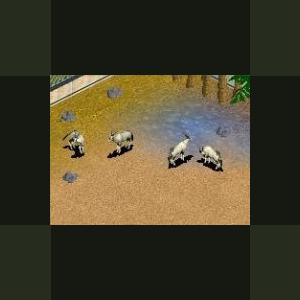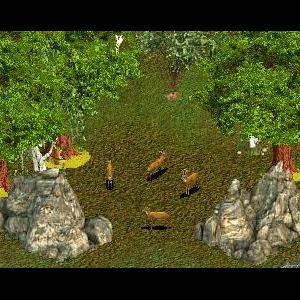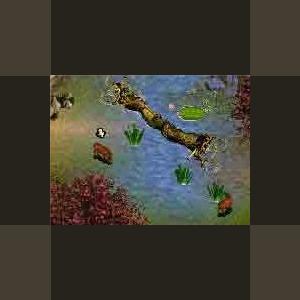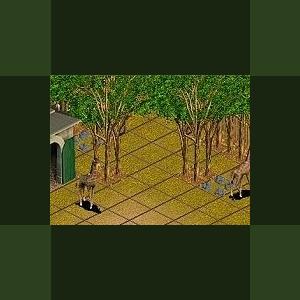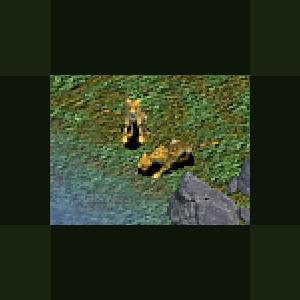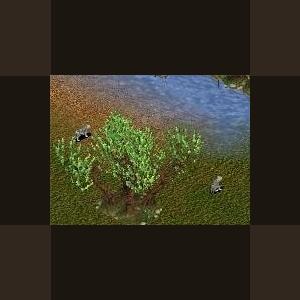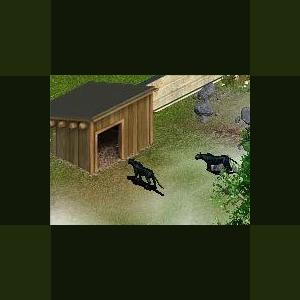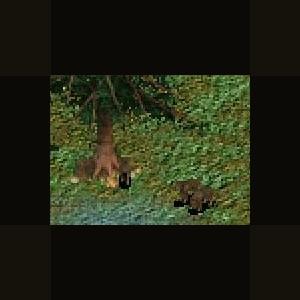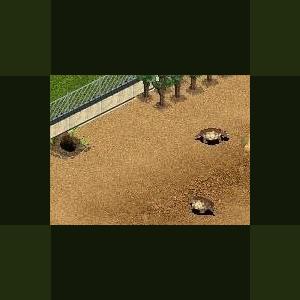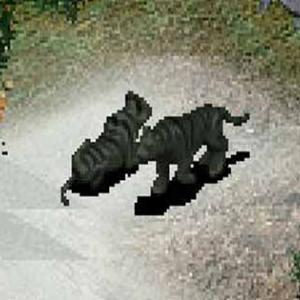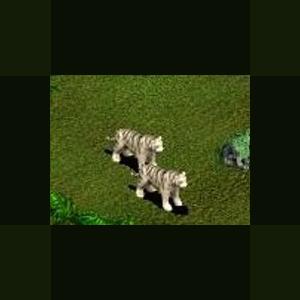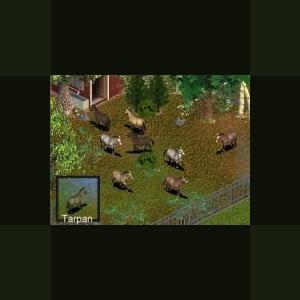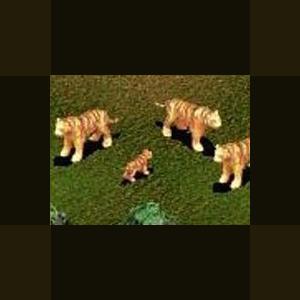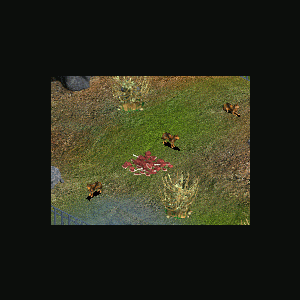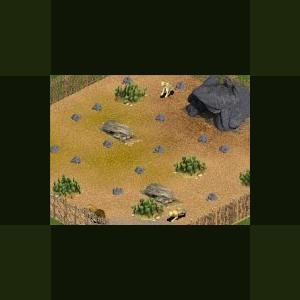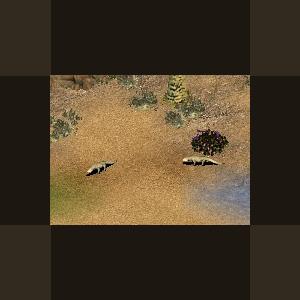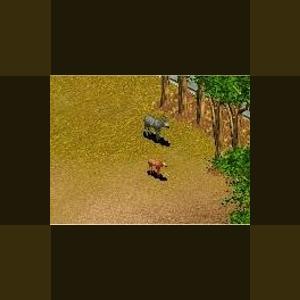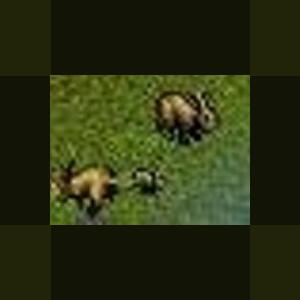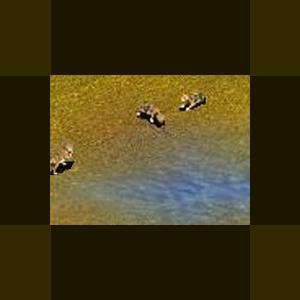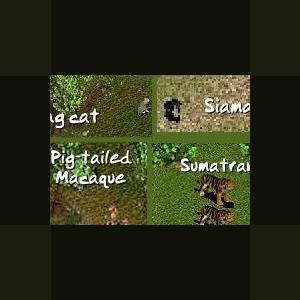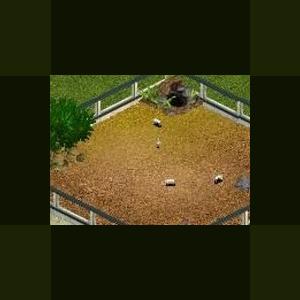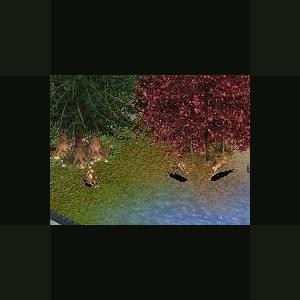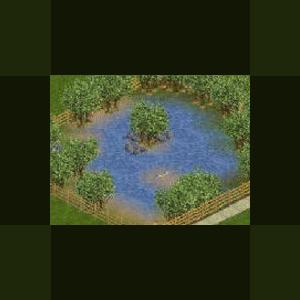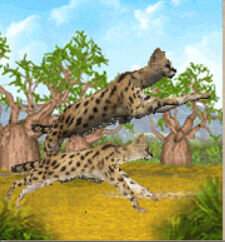279 files
-
Arabian Oryx by Jordan
By Guest
Arabian Oryx by Jordan
The Arabian Oryx is a highly endangered antelope living in the barren steppes, semi-deserts, and deserts of the Arabian peninsula. Only a few hundred remain in the wild.
Updated 2010-10-30
Just to save space with less in zip and smaller image.
Nothing new.
438 downloads
0 comments
Updated
-
Eurasian Roe Deer by Taz (Tasmanian_tiger)
By Fern
Eurasian Roe Deer
Author : Taz (Tasmanian_tiger)
Originally released : August 1, 2004 at Zoo Admin
Updated : August 26, 2013 by Jay to correct 1 animation view, to remove unnecessary files and configuration lines, to make some minor adjustments to the animal info, and to make it like the English Elms as much as its most liked in-game foliage. Please note that the version at Taz's site is no longer the most current version, since she is deceased.
Current ztd date : August 26, 2013
Compatibility : All Game Versions
Description : The Roe Deer is very abundant in some areas of Europe. It was originally a forest dweller but has adapted to live successfully in cultivated fields and the small woods created by man. There are three sub-species of Roe Deer: the European Roe Deer, the Siberian Roe Deer, and the Chinese Roe Deer. The Siberian form is larger than the other two, and has antlers which have more branches.
Description from Taz's site : The real Bambi.. first deer I did, in an attempt to create more European mammals.
Description by Taz when she originally put it at Zoo Admin : The Eurasian roe deer is one of the most common deer of Europe. The roe deer is also known from "Bambi", the book, that is. The movie uses another species. Habitat is deciduous forest. This animal will add interest to any zoo.
438 downloads
0 comments
Updated
-
Cuvier's Dwarf Caiman by Ghirin
By Guest
Cuvier's Dwarf Caiman by Ghirin
Cuvier's dwarf caiman (Paleosuchus palpebrosus) is the smallest living species of crocodillian.
It is known for its heavily ossified armor.
References:
www.wikipedia.com
http://www.flmnh.ufl.edu/cnhc/csl.html
Updated 2010-10-30
Just to save space with less in zip and smaller image.
Nothing new.
Updated August 18, 2018 by Cricket so that screenshot would show up again.
435 downloads
0 comments
Updated
-
Arkansas Razorback by Voolfie
By Guest
Arkansas Razorback by Voolfie
The razorback is thought to have evolved from domestic pigs that Spanish conquistador, Hernando de Soto, and his expedition brought when they explored the Mississippi Valley region. Some would have been bartered with the local Indians, while others would have strayed from the expedition into Arkansas. After many generations in the wild, they reverted into thin, long-legged, mean hogs. Protruding tusks developed in long snouts for rooting and fighting. The name "razorback" referred to the sharp backbone trimmed with long bristly hair. As Arkansas become populated, homesteaders would hunt these new natives. Some were even captured and raised on the farm. With the coming of the railroad some would escape from their pens and get on the tracks.
One nineteenth century farmer wrote a poem and sent it to the local railroad claim agent: My razorback strolled down your track, A week ago today. Your #29 came down the line, And snuffed his life away.You can't blame me, the hog you see, Slipped through a cattle gate, So kindly pen a check for ten, The debt to liquidate. A few days later, he was surprised to receive the following: Old #29 came down the line, And killed your hog, we know, But razorbacks on railroad tracks, Quite often meet with woe. Therefore, my friend, we cannot send, The check for which you pine, Just plant the dead, place o'er his head, Here lies a foolish swine. (Previously published in RootsWebReview: Vol. 5, No. 12, 20 March 2002 with thanks to Nancy Lambert nlambert@pdnt.com]. Moving along to 1909, razorbacks in the wild were becoming a rare sight. That was the year that then University of Arkansas football coach, Hugo Bezdek, told his victorious team and student population- they played "like a wild band of Razorback Hogs." So as of the 1910 season the University of Arkansas' mascot has been a razorback. The team colors are red and white - naturally the razorback mascot is bright red. This Arkansas Razorback for your zoo enjoys deciduous forests, and dogwood trees.while rooting through the rolling Ozark forests. In recreating this extinct creature, please forgive the uncontrollable whim to tweak the DNA - making it RED.
Special thanks to Ghirin for showing me how to strive for perfection.
The coloring was done by Ghirin, and with her help I changed the rest.
Please enjoy, voolfie
p.s. don't forget to read the c.1880 poem i found -it is in the
description.
Updated 2010-10-30
Just to save space with less in zip and smaller image.
Nothing new.
431 downloads
0 comments
Updated
-
Rothschild Giraffe by Coolperson5
By Guest
This Giraffe is a critically endangered subspecies from Kenya and Uganda.
Updated 2010-11-05
Just to save space with less in zip and smaller image.
Nothing new.
425 downloads
Updated
-
Barbary Leopard by Ghirin
By Guest
Barbary Leopard by Ghirin
The Barbary Leopard resembles the familiar leopard of East Africa, but in keeping with its home in the snowy Atlas Mountains of North Africa, it is stockier, with a thicker coat. A bold and versatile cat, it may go for a month without drinking. It consumes nearly any form of protein, from beetles to antelope nearly twice its weight. The Barbary Leopard is also a predator of the Barbary Macaque. This leopard prefers a montane habitat of mixed coniferous and deciduous terrain. The Barbary Leopard is an endangered subspecies. Only 12 may remain in the Atlas Mountains.
Information and photos from: http://www.pbs.org/s...fe/leopard.htm.
Created By Ghirin 2003
Updated 2010-10-30
Just to save space with less in zip and smaller image.
Nothing new.
424 downloads
0 comments
Updated
-
Fishing Cat by Jordan
By Guest
The fishing cat is a small cat of Southeast Asia which lives along streams, rivers and swamps.
Updated 2010-11-03
Just to save space with less in zip and smaller image.
Nothing new
418 downloads
Updated
-
Black Puma by LAwebTek
By Guest
Black Puma
Author: LAwebTek
Black (Melanistic) pumas, also known as cougar, panther, mountain lion, night screamer, catamount, mountain devil, and king cat, are not a separate subspecies of puma, but rather a color variation within the species. Black pumas are extremely rare to the extent that no one has ever captured one and placed it in captivity. There are very few photographs or sightings of the black puma, although clearly enough to prove that the animal does exist and is not a myth as was once believed.
Black pumas are believed to reside primarily in Canada and the northern most parts of the United States. The black color is an adaptation to the colder climate, while pumas in most of North and South America have a redish-brown color. The black puma's ideal habitat is mountainous forests up to 16,000 feet. Pumas are very territorial and mark their territory. They are carnivores that are active both day and night and their prey consists of a variety of mammals, birds and fish. If larger animals such as white-tail deer, caribou and moose are not available, the puma is able to adapt quickly and switch to smaller prey such as raccoon, skunk, birds and fish. If hungry enough, the puma will even take down horses, cows, and other livestock and so it has a bad reputation by farmers.
Black pumas can range in weight from about 150 lbs. to 200 lbs, the male is larger than the female. Their tail can be almost as long as their body length and is used for balance. Using sight and sound more then scent, the puma stalks its prey. Their back legs are more developed than their front legs which allows them to ambush prey and jump on their backs to go in for the kill. Pumas have the ability to leap an incredible 40 feet. The strong muscle development in the back also enables the puma to maneuver in the more difficult mountainous areas and steep ravines. When hunting, the puma grips into the victims neck and either snaps the prey's neck or grips into the windpipe until it suffocates. After the puma kills its victim, it will cover it with debris to reduce the risk of other animals finding the carcass and to prolong the food.
Males breed with a large number of females to increase reproductive success. One male will have a very large range and all the females, who have much smaller ranges are resident in the male's territory, will mate with that one male. The male will search for days for the female(s), covering 50 km in a day and night. The puma, who hunts silently, will howl when ready to breed. Pumas do not choose a particular season to mate. The females will mate starting around age two or three and will select a cave or other shelter as a spot for her cubs' birth. One to six cubs may be born, blind and helpless. They gain vision after two weeks. The cubs will grow its parents' muscular jaws, wide gape, and long teeth which are designed to clamp into it's prey, as well as to eat it. While they are cubs, the female will protect and feed them. This will continue until they are about a year and a half old and can defend themselves.
Updated 2010-10-30
Just to save space with less in zip and smaller image.
415 downloads
0 comments
Updated
-
Raccoon Dog by Ghirin
By Guest
Raccoon dogs (Nyctereutes procyonoides) are considered by some authorities to be the most primitive members of the dog family. In appearance, they resemble raccoons. Raccoon dogs do display most of the characteristics of other canines; however, they cannot bark. They live in pairs or small family groups of the parents and their cubs. They prefer to live in moist, heavily forested regions and are omnivores.
Raccoon dogs are native to eastern Asia. The species has been introduced to western Eurasia by the fur industry and has become established in its new home.
In Japan, the raccoon dog is called tanuki and features in folks tales and traditional medicines.
Reference:
www.lioncrusher.com
Photograph:
http://www.aoba.sakura.ne.jp/~momoncyo/zoo/animal_raccoon_dog.htm
Created by Ghirin 2003
Updated 2010-11-05
Just to save space with less in zip and smaller image.
Nothing new.
412 downloads
0 comments
Updated
-
Desert Tortoise by Jordan
By Guest
The desert tortoise is a small reptile found in the Mojave and Sonoran Deserts of southeastern California, southern Nevada and south through Arizona into Mexico.
Updated 2010-10-30
Just to save space with less in zip and smaller image.
Nothing new.
408 downloads
0 comments
Updated
-
Black Tiger by LAwebTek
By Guest
Black (melanistic) colour is due to the non-agouti mutation. Agouti refers to the ticking of each individual hair on the background colour of a tabby cat. In certain light, the pattern still shows up because the background colour is less dense than the colour of the markings.
Other so-called black tigers are due to pseudo-melanism. Pseudo-melanistic tigers have thick stripes so close together that the tawny background is barely visible inbetween. One was shot in India in 1928 and another pseudo-melanistic tiger pelt was recovered in 1992. Pseudo-melanistic tigers are said to be getting more common; this may be due to inbreeding caused by habitat reduction. The observation that black tigers are smaller than normal tigers also suggests inbreeding. As humans require more space, tigers are forced into smaller areas with a smaller choice of mates; these conditions promote inbreeding and the perpetuation of anomalous patterns or colours.
In the mid-late 1700s, James Forbes painted a black tiger with even darker stripes. Similar tigers with faint markings have periodically been reported. These would correspond to the ghost markings seen on black leopards and black jaguars. A black tiger from the East Indies was apparently once housed at the Tower of London menagerie, but it was more likely to have been a black leopard. A jet-black tiger with no visible markings was apparently shot in India in 1915. Black tigers were reported in China in 1951, 1953 and 1957 (no information as to whether pseudo melanism or true melanism).
2003 LAwebTek
Updated 2010-10-30
Just to save space with less in zip and smaller image.
406 downloads
0 comments
Updated
-
Javan Tiger by Moondawg
By Guest
The Javan tiger (Panthera tigris sondaica) was a tiger limited to the Indonesian island of Java.
It now seems likely that this subspecies was made extinct in the 1980s, as a result of hunting and habitat destruction, but the extinction of this subspecies became increasingly probable from the 1950s onwards, when it is thought that fewer than 25 tigers remained in the wild. The last specimen was sighted in 1972. A track count in 1979 concluded that three of the tigers were in existence. However it is possible that it is not extinct, as in the 1990s, there were some unverified reports of sightings.
By 1940, the Javan tiger had been pushed into remote mountain ranges and forests. Some small reserves were set up, but were not large enough, and the quantity of prey species were too low. By the mid-1950s, 20-25 tigers remained on Java. Half of these were in the well-known Ujong Kulon Wildlife Reserve, but the 1960s saw all tigers eliminated from this area and also from Baluran National Park. By 1972, the Javan tiger count was down to a maximum of seven in the newly-formed Meru Betiri Forest Reserve, and perhaps five elsewhere. Meru Betiri was rugged and considered this tiger's last chance for survival. However, even as it was declared a reserve, the area was under attack by agricultural development. A 1979 census located the tracks of only three tigers. Substantiated evidence that this tiger is still alive has not been forthcoming since then. The exact time of extinction remains unknown, but this was probably sometime in the mid-1980s.
Javan tigers were very small compared to other subspecies. Males were between 100 kg (220 lb) and 141 kg (310 lb) on average and around 2.45 m (8.0 ft) in length. Females weighed between 75 kg (170 lb) and 115 kg (250 lb) on average and are smaller than males in length.
Occasional reports still surface of a few tigers to be found in east Java where the forested areas account for almost thirty percent of the land surface. Meru Betiri National Park, the least accessible area of the island, is located here and considered the most likely area for any remaining Javan tigers. This park is now coming under threat from three gold mining companies after the discovery of 80,000 tons of gold deposit within the locality.
Despite the continuing claims of sightings it is far more likely that, even with full protection and in reserve areas, the Javan tiger was unable to be saved. The 'tigers' are quite likely to be leopards seen from a distance.
At the present time the World Conservation Monitoring Centre lists this subspecies as having an 'outstanding query over status' rather than 'extinct', and some agencies are carrying out experiments using infrared activated remote cameras in an effort to photograph any tigers. Authorities are even prepared to initiate the move of several thousand people should tiger protection require this.
But until concrete evidence can be produced (expert sightings, pug marks, photographic evidence, attacks on people and animals), the Javan tiger must be considered yet another tiger subspecies which is probably extinct.
In November 2008, an unidentified body of a female mountain hiker was found in Mount Merbabu National Park, Central Java, allegedly died from tiger attack. Villagers who discovered the body has also claimed some tiger sightings in the vicinity.
Updated 2010-11-03
Just to save space with less in zip and smaller image.
Nothing new.
405 downloads
0 comments
Updated
-
European Horses and Forest Tarpan Comb. by Genki and Ghirin
By Guest
Genki's European Horses and Ghirin's Forest Tarpan combined into a single ztd. These 5 horses are 100% compatible, and will be very happy in a shared exhibit.
Forest Tarpan by Ghirin:
The tarpan (Equus caballus gmelini) was the wild horse of Europe and western Asia.
There were two basic types: forest and steppe. The forest tarpan was a bit smaller than its steppe counterpart and darker in color. The tarpan is believed to the ancestor of modern light horse breeds.
The forest tarpan lived in most of Europe, dwelling in the forested areas. It became extinct as farmers converted its habitat to farmland and killed tarpans because tarpan stallions would steal domesticated mares for the wild herds. The original wild tarpan died out in the late 1800s.
Two attempts have been made to reconstruct the tarpan from animals of mixed tarpan and domestic background. In Poland, the government has established a feral herd of horses descended from mixed stock in the forest preserve of Bialowieza. With each generation, this herd seems to display more tarpan-like characteristics. The second attempt was by German zoologists. They used primitive breeds of European horses to produce a tarpan-like horse.
The classic features of the forest tarpan include a mouse-dun color with a black stripe down the center of the back and dark legs, semi-erect mane, large head with massive jaws, a thick neck, and tough hooves that do not need to be shod.
Created by Ghirin 2003
Updated 2010-11-03
Just to save space with less in zip and smaller image.
Nothing new
405 downloads
0 comments
Updated
-
Golden Tabby Tiger by Moondawg
By Guest
Golden Tabby Tiger
The Golden Tabby Tiger or Golden Tiger is an extremely rare colour variation caused by a recessive gene and now found only in captive tigers. Like the white tiger it is a colour form and not a separate species. It is sometimes referred to as the strawberry tiger due to the strawberry blonde coloration. No official name has been designated for the color.
The Golden Tabby Tiger or Golden Tiger is an extremely rare colour variation caused by a recessive gene and is currently only found only in captive tigers. Like the white tiger, it is a colour form and not a separate species. In the case of the golden tabby, this is the wide band gene; while the white tiger is due to the color inhibitor (chinchilla) gene. There are currently believed to be less than 30 of these rare tigers in the world, but many more carriers of the gene.
While no official name has been designated for the color, it is sometimes referred to as the strawberry tiger due to the strawberry blonde coloration. he golden tabby's white coat and gold patches make it stand out from the norm. Their striping is much paler than usual and may fade into spots or large prominent patches. Golden tabby tigers also tend to be larger and, due to the effect of the gene on the hair shaft, have softer fur than their orange relatives.
Like their white cousins ,all golden tabby tigers have mainly Bengal parentage, but are genetically polluted with the genes of the Amur tiger via a part-Amur white tiger called Tony, who is a common ancestor of almost all white tigers in North America. The suggestion that this coloration is caused through the deliberate breeding of Amur tigers with Bengal tigers is a popular myth founded on this fact. All golden tabbies appear traceable to one of Tony's male descendents, Bhim.
India has records of wild golden tigers which date back as far as the early 1900s. There have been suggestions that the tendency for this coloration gradually developed in a small group of tigers living in an area of heavy clay concentration. The unusual color would provide these tigers with extra camouflage. The theory remains unproven, however, inbreeding of a small isolated group of tigers could cause the recessive golden tabby gene to emerge if at least one of those tigers carried the recessive gene for the golden color and bred with its own offspring (as has happened in captivity).
Golden tigers and stripeless or nearly stripeless tigers may occur in the same litter. This is due to the effect of the wide band gene on the normal orange colour and the white colour respectively. The wide band mutation is not found solely in white tigers and may also be carried by normal coloured tigers, however carriers of the wide band gene are probably no longer found in the wild. Wild-born golden tabby tigers might be disadvantaged as they are less well camouflaged than normal orange tigers. The last known wild Golden Tabby tigers were shot outside of Mysore Padesh, India in the early 20th century. But there are just under 30 left in captivity.
Few zoos have bred or exhibited golden tabby tigers and many have no knowledge of the color or its mode of inheritance. It therefore usually appears by accident when breeding orange and white tigers together rather than through planning. As white tigers and heterozygous normal coloured tigers are traded and loaned between zoos and circuses for breeding, if they also carry the wide band gene, that gene becomes widespread. When their descendants are mated together, the golden tabby colour is passed on to the offspring if both parents are gene carriers. Unless golden tabby cubs are born, the zoos may have no idea that the parents carry that gene.
The first golden tiger cub born in captivity was in 1983 and this came from standard-colored Bengal tigers, both of whom carried the recessive genes for both the golden tabby and white colours. It was born at Dr. Josip Marcan's Adriatic Animal Attractions in Deland, Florida.
An example of a Golden Tabby is in Dream World in Australia. Samara, a normal orange tigress, had been mated with nearly-stripeless white male, Mohan. Her litter included one normal orange cub (Sultan), the first white tiger born in Australia (Taj, also nearly stripeless), and the first two tabby-colored tigers (male Rama and female Sita) born in Australia. The cubs weighed around 1.5 kilograms and measured approximately 30 centimeters in length. They were removed from their mother soon after birth and hand raised. The births and hand-raising process were filmed and presented in an hour long documentary. Golden tabby Sita will be mated to an unrelated normal orange tiger called Kato.
Diamond, a male golden tiger, is housed at the Isle of Wight Zoo in the UK. Because he is inseparable from his normal coloured sister, who also carries the golden gene, Diamond was castrated to prevent inbreeding. Longleat Safari Park in the UK also has a golden tiger. Glasgow Zoo's golden tiger, Butu (also spelled Bhutto), obtained from Longleat, went to Germany when Glasgow Zoo closed. Longleat previously had an elderly golden tiger named Sonar, but he passed away in 2006.
A few Golden Tabby's are also found at Six Flags Great Adventure in Jackson, New Jersey: A male, Kingda Ka, who has a roller coaster named after him, and a few others who make up the family that appears in daily educational award-winning shows about these specific tigers.
Though golden tabby tigers are not deliberately bred for by conservation-minded zoos, they have joined the white tiger in becoming popular for use in stage shows and similar events. A few private breeders are attempting to produce golden tabby tigers alongside white tigers to meet demand. The golden tabby tiger and the white tiger could therefore be regarded as human-perpetuated "breeds", however, some zoos and wildlife parks refer to both golden tigers and white tigers as endangered.
Litters of different colored cubs are not unusual because the white and golden tabby colours are caused by combinations of hidden recessive genes carried by the parents. White tigers, such as Dreamworld's Mohan (named after the white tiger captured in India in the 1950s), are highly inbred. Inbreeding reduces genetic variability and may cause hidden genes to manifest as there is a greater probability that two recessive genes will meet up.
Analysis of golden tabby tiger family trees shows that golden tabbies are genetically normal orange coloured tigers with the addition of a recessive modifiying gene, probably the wide band gene. This same wide band gene also gives rise to stripeless white tigers. A white tiger that inherits two copies of the recessive wide band gene will be a stripeless white. A normal orange tiger that inherits two copies of the recessive wide band gene will be a golden tabby. The wide band gene is carried independently of the white gene.
All golden tabby tigers seem traceable to a white tiger called Bhim, a white son of Tony. Bhim was a carrier of the wide band gene and transmitted this to some of his offspring. Bhim was bred to his sister Sumita (also a carrier of the wide band gene), giving rise to stripeless white tigers (i.e. having two copies of the wide band gene). Bhim was also bred to a normal orange tigress called Kimanthi, and then to his own orange daughter Indira from that mating. The mating of Bhim and Indira resulted in striped white, stripeless white, normal orange, and golden tabby offspring indicating that both Bhim and his daughter carried the wide band gene. When the golden tabby male offspring was mated to the normal orange female offspring, both golden tabby tigers and white tigers resulted.
At Dreamworld, Australia, it was demonstrated that the mating of a nearly stripeless white tiger to an orange tigress that carried both white and wide band genes would result in golden tabby offspring alongside nearly stripeless white and normal orange cubs.
Updated 2010-11-03
Just to save space with less in zip and smaller image.
Nothing new
404 downloads
0 comments
Updated
-
Ethiopian Wolf by Ryno
By Guest
Ethiopian Wolf by Ryno
The Ethiopian Wolf also known as the "Abyssinian Wolf", "RedJackal"or "Fox", "Simen/Simenian/Simian/Simien Fox or Jackal" and "Jedalafardaa" ("Horse's Jackal" in English), is one of the rare
Updated 2010-11-03
Just to save space with less in zip and smaller image.
Nothing new.
399 downloads
0 comments
Updated
-
Kalahari Lion by Coolperson5
By Guest
The lion is the largest African carnivore. The native habitat of the lion is the wide savannah of central and southern Africa. This region's wide swaths of tall grasses provide excellent coverage for lions on the hunt, and the occasional tree provides shade for resting lions. The lion spends over 20 hours a day resting, usually in the shade of trees or rocks. However, the lion is a very athletic cat, capable of impressively long and high leaps. They are also terrific climbers.
Unlike other large cats, lions are social in nature, living in prides of up to 40 animals, primarily females and cubs. Lions hunt both singly and in groups, although their success rate is much higher in groups. The lionesses do most of the hunting, while the male lions protect the pride from predators, including other lions. For every dozen attempts, lions average one kill. Their diet varies by region but may include gazelle, zebra, and wildebeest. In captivity, lions eat a steady diet of meat and dry foods. These large cats require a regular supply of drinking water, although otherwise they do not care for this element.
Lions compete with and sometimes prey on the other carnivores found on the savannah. They will sometimes kill and eat leopards and cheetahs. Lions and hyenas have a particular dislike for one another. Adult male lions will go out of their way to kill hyenas.
When agitated, a lion will emit its legendary roar, which can be heard more than six miles away. Lions tend to get quite upset when there is not enough food available.
Lions reproduce very well in captivity.
Updated 2010-11-03
Just to save space with less in zip and smaller image.
Nothing new.
398 downloads
0 comments
Updated
-
Perentie by Volksdragon
By Guest
Perentie by Volksdragon
Perenties are fairly large Australian lizards in the monitor family.
Perenties are fairly large lizards in the monitor family. They come from the deserts and scrublands of Australia
Updated 2010-11-05
Just to save space with less in zip and smaller image.
Nothing new.
397 downloads
Updated
-
Lesser Kudu by Ghirin
By Guest
Lesser Kudu by Ghirin
The lesser kudu (Tragelaphus imberbis) is large antelope found in East Africa. Males and females are dimorphic. The males have grey-brown coats while females have reddish chestnut coats. They prefer areas of dry forest and thornbush.
References:
www.wikipedia.org
www.ultimateungulate.com
*Inspired by the Zoo Tycoon Brains Trust at the Zoo Tycoon Forums*
Updated 2010-11-03
Just to save space with less in zip and smaller image.
Nothing new.
392 downloads
0 comments
Updated
-
European Rabbit by Sundance
By Guest
European Rabbit by Sundance
In several parts of the world the European rabbit is known for the damage and depredation. It was introduced into Britain by the Normans, and introduced from there by settlers into Australia and New Zealand.
Once introduced in the wild its numbers increased and livestock pastures and crops were devastated. In Australia, the near extinction of several types of marsupials can be attributed to competition with rabbits. European rabbits can be prolific breeders. One doe can produce up to thirty young in a single breeding season.
works with ZT, DD, MM and CC.
Updated 2010-11-03
Just to save space with less in zip and smaller image.
Nothing new
391 downloads
0 comments
Updated
-
North African Wildcat by Ghirin
By Guest
The wildcat (Felis sylvestris) is widespread throughout Africa and Eurasia. The species is divided up into three main groups based on geographic location: Lybica from Africa, Sylvestris from Europe, and Ornata from Asia. In turn these three groups are further divided into subspecies.
The African wildcat is found throughout Africa except in areas of true desert. The species is solitary. Males often control a territory containing several smaller territories that are controlled by individual female wildcats. They hunt during the night, late evening, and early morning, preying mainly on small rodents. Other small animals such as rabbits, insects, birds, and small reptiles are also hunted.
Updated 2010-11-04
Just to save space with less in zip and smaller image.
Nothing new.
390 downloads
0 comments
Updated
-
Sumatran Animals by Tek Design
By Guest
Four Sumatran animals:
Fishing cat, Siamang, Pigtailed Macaque, and Sumatran Tiger
Updated 2010-11-06
Just to save space with less in zip and smaller image.
Nothing new.
390 downloads
0 comments
Updated
-
Naked Mole Rat by Jordan
By Guest
Naked Mole Rats are African rodents which live in burrows and can thrive in small exhibits.
Updated 2010-11-04
Just to save space with less in zip and smaller image.
Nothing new.
389 downloads
0 comments
Updated
-
Japanese Macaque by Coolperson5
By Guest
Japanese Macaque by Coolperson5
The Japanese Macaque is the farthest northern living non-human primate. They are known for being very smart and copying humans.
Updated 2010-11-03
Just to save space with less in zip and smaller image.
Nothing new.
388 downloads
0 comments
Updated
-
Dragonfly by African Raptor
By Guest
Dragonfly is a kind of insect. It belongs to the Order Odonata and the Class Insecta. The family is True bugs. Given its large claw-like pinchers, the dragonfly is a predator and feeds on other organisms.
You can recognize a dragonfly nymph by its teardrop shaped abdomen. It also has very large eyes.
There are about 5,300 species of dragonflies around the world. It is an insect that has two pairs of thick and long wings.
It lives near fresh water (usually slow moving) and swamps. It spends its childhood in water. Dragonflies are not harmful to people, though are smart hunters. They can fly up to 60 mph and live for 2-5 years average.
For four years, dragonflies are in a young time when they live under the water. For one year they are an adult dragonfly.
Dragonflies have been around for 300 million years. In old prehistoric times dragonflies had wings that were over two feet wide.
Dragonflies can eat water insects as larvae, but as they grow older they eat tadpoles, small fish (really small fish), and even their own species.
Updated 2010-10-30
Just to save space with less in zip and smaller image.
Nothing new.
387 downloads
0 comments
Updated
-
Serval
By Khaydar
Adopt a Serval ( Leptailurus serval) for your zoos.
Animal guide:
Minimum happiness needed for chance of breeding: 97.
Liked foliage:
Savannah foliage
Liked rock:
Large Rock, Small Rock - Medium, Small Rock - Small
Animal can jump.
Animal can climb cliff.
Number of animals allowed per exhibit:
1-2 with 18 squares each.
A suitable exhibit for 2 of this animal has 36 squares containing terrain of:
26 Savannah Grass, 4 Sand, 4 Dirt, 2 Fresh Water
using 6 grid squares filled with 4 Tall Grass most liked plant
and using 19 Small Rock - Small most liked rock.
Preferred shelter:
Large Burrow.
Other liked items:
Waterfall Rock
384 downloads
- living animal
- khaydars animal
- (and 1 more)
Updated

